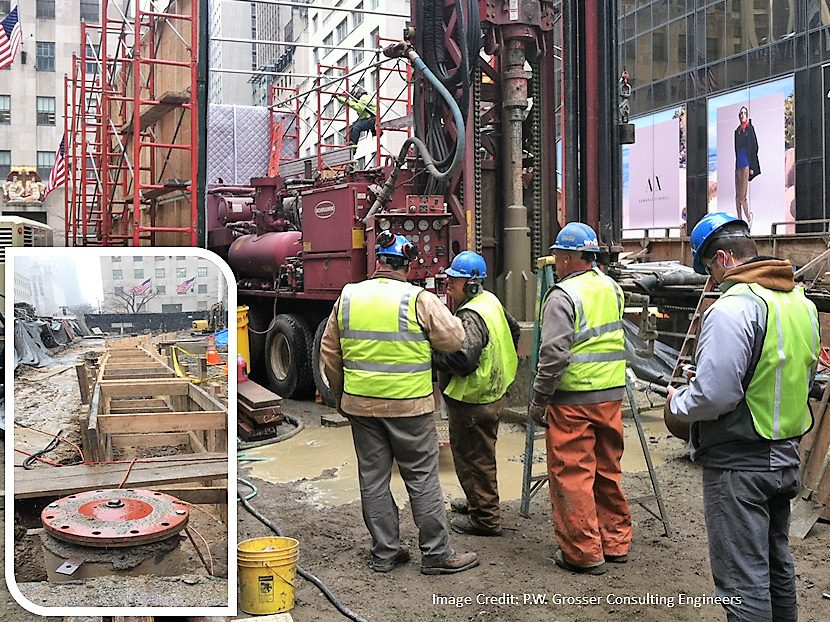St Patrick’s Geothermal Cathedral in NYC
Using standing column wells keep the aesthetics of this historic church.

You would be surprised at the places that have adopted geothermal solutions. St. Patrick’s Cathedral in New York City is one of those amazing stories. Thanks to a lot of good folks, they may never need another piece of equipment installed outside the beautiful walls of the historic sanctuary. Instead of relying on Con Ed’s steam pipes or installing outside condensers or cooling towers, they “drilled down” for a more permanent solution.
The credit for this magnificent geothermal undertaking goes in part to P.W. Grosser Consulting Engineers and geologist John Rhyner, a good friend of mine. John and I have been rubbing shoulders for many years on various efforts. In 2017, the International Ground Source Heat Pump Association (IGSHPA) asked us to prepare a live session on open-loop geothermal systems. We presented it to a small group of professionals during the 2017 IGSHPA conference in Denver.
The timing for this conference was perfect to showcase a multitude of recent projects, including St Patrick's Cathedral in Manhattan. The cathedral’s geothermal system was installed and operational just in time for St Patrick's Day, 2017. Considering the IGHSPA conference occurred March 14-16, there was a lot of good going on at the same time.
It was wonderful to be there with John, one of the key individuals who worked on this remarkable project. Before sharing some of the details of what the project entailed, it's important to understand what drove the decision makers toward a geothermal solution in the first place.
In 2012, St Patrick's Cathedral began a major renovation costing about $177 million. The renovation has provided improvements to just about every square inch of the historic building. The cathedral had been operating off of Consolidated Edison’s city steam system. Its mechanical systems were in need of an upgrade.
For the mechanical upgrades, St. Patrick's looked into at least three different plant options: a conventional system; buying chilled and heated water from Rockefeller Center; or going with a geothermal HVAC system.
Rhyner notes that the church chose geothermal because it had the lowest first cost and the long-term operations and maintenance were less when compared with other systems.
After a thorough comparative study and analysis, the church selected the geothermal system because it provided the most benefits on multiple fronts, says Jeffrey Murphy, a partner at Murphy Burnham & Buttrick Architects in New York City. As with most aesthetically important structures, especially those of historical significance, Murphy notes that geothermal heating and cooling was necessary to minimize the alteration of the iconic building.
The heating and cooling distribution system was carefully integrated into existing housings and infrastructure to ensure that worshippers and the five million yearly visitors would not be impacted by the new mechanical system.
Rich Sileo is a senior engineer with Landmark Facilities Group, the folks tasked with maintenance of the historic structure. His input into the decision-making process was critical. He and his team knew they could not take the conventional approach to mechanical systems, such as installation equipment on the roof or in plain view.
Aesthetic, energy-efficient design
Designing a system to operate for more than 20 years required his team to select the most energy-efficient and sustainable pieces of equipment that could be installed and still be easily replaced. Geothermal HVAC is the longest-lasting and most energy-efficient type of heating and cooling system available.
Sileo says St. Patrick’s geothermal system provides full heating and cooling capacity for the entire campus. With no equipment outside of the building and no boiler, the structure’s HVAC system truly has a very low impact to the historic structure.
The geothermal wells — which eliminate the need for boilers, cooling towers or any outside equipment — are designed as standing column wells (SCW). This system is one of several types of earth coupling used in geothermal HVAC design. SCWs work well in geology with competent rock, especially fairly dense rock such as granite, with little overburden or loose soil at the surface.
A standing column well involves a borehole of a predetermined size with a porter shroud inserted in the center. Water is drawn through the shroud, exchanges heat with the HVAC equipment and then is injected back into the well along the outside of the shroud.
One of the advantages to standing column wells is they require fewer linear feet of borehole per ton of cooling and heating capacity. Here is a breakdown of St Patrick's geothermal system by the numbers:
• There are 10 wells; each has a heating and cooling capacity of about 25 tons.
• The depth of each well is an average of 1,650 feet; they range from about 800 feet. to about 2,200 feet.
• Each standing column well has its own plate-and-frame heat exchanger.
• The system is rounded out by multistack heat recovery chillers with a capacity of 240 tons and a four-pipe water distribution system with secondary pumping arrangements.
System benefits include no noise pollution, no on-site greenhouse gas emissions, no on-site particulate emissions, no steam or hot-air plumes and no impact on the cathedral’s aesthetics.
The geothermal system was seamlessly integrated into the existing structure, Rhyner notes, including the ornamental enclosures that were used to cover the original steam radiators for heating at the floor level. The design team knew they could not run ductwork in the open or create new openings in walls, ceilings or floors. Working within the existing ornamental radiator enclosures, the team chose modern fan-coil units to receive hot water from the geothermal plant.
Next time you're in Manhattan, stop in and see for yourself why geothermal is the finest heating and cooling available at any price. It’s out of sight, out of mind and will help you to enjoy the peaceful ambiance of this historic cathedral.
It's easy to get involved in geothermal heating and cooling. Simply log on to IGSHPA’s website (www.igshpa.org) and select a designer in your area to help implement geothermal in your next project. Alternatively, become a designer or contractor yourself through the same resource by taking the appropriate certification classes while earning continuing education units.





